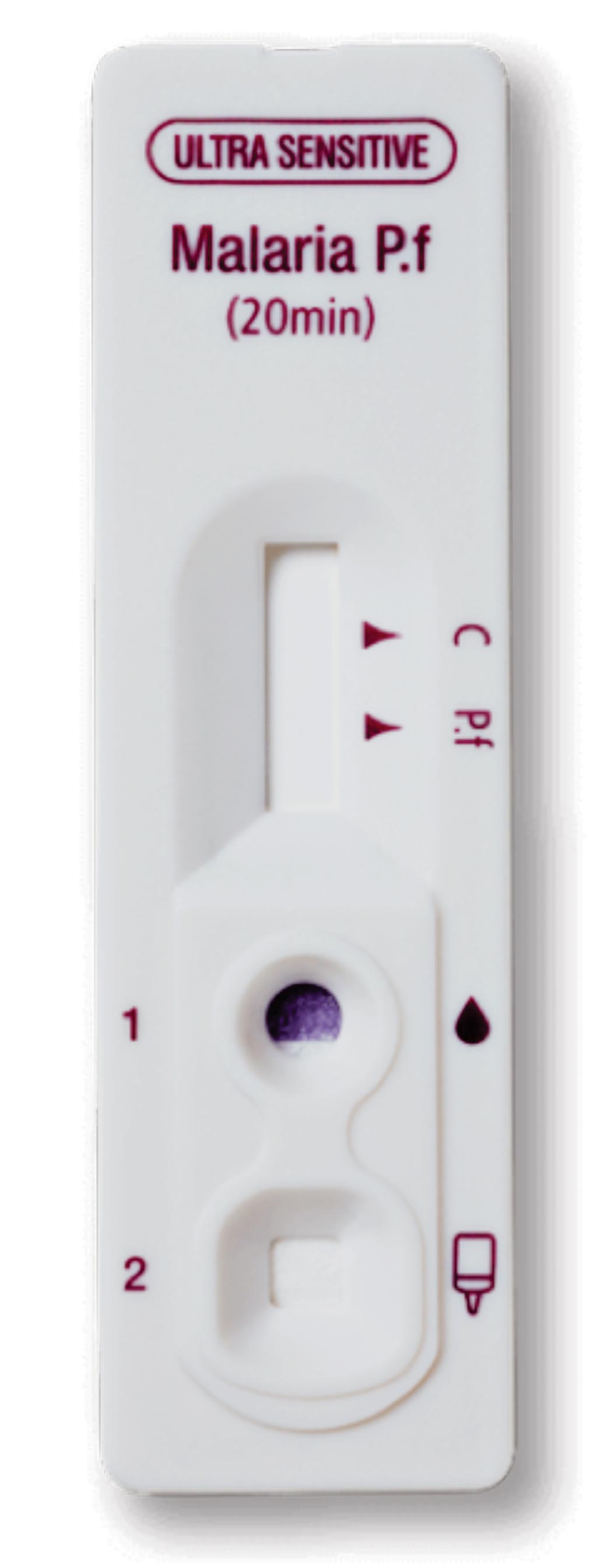Rapid Diagnostic Test for Malaria Evaluated
By LabMedica International staff writers
Posted on 14 Sep 2017
The ability of individuals to carry low-density malaria infections and have minimal clinical symptoms is believed to be the consequence of exposure-related clinical immunity, resulting in the suppression of parasitemia, and has been observed in both high- and low-transmission settings.Posted on 14 Sep 2017
Although laboratory assays, such as polymerase chain reactions (PCR) and enzyme-linked immunosorbent assays (ELISA) are more sensitive than microscopy and rapid diagnostic tests (RDTs), they are also more expensive, require highly trained personnel, take longer to produce results, and are more difficult to deploy for large-scale field use.

Image: The Malaria Ag P.f Ultra-Sensitive rapid diagnostic test (Photo courtesy of Alere).
A large team of scientist led by those at Diagnostics Program, PATH, (Seattle, WA, USA) evaluated the performance of a new ultra-sensitive RDT (uRDT) using whole blood specimens collected from asymptomatic individuals in Uganda, and a Karen village in Myanmar, representing high- and low-transmission settings, as well as from naive individuals enrolled in Plasmodium falciparum induced blood-stage malaria (IBSM) challenge studies.
The scientists evaluated the Alere Malaria Ag P.f Ultra-Sensitive RDT, which was developed for field use and evaluated for detection of low-density infections and compared with as compared with the currently available SD Bioline Malaria Ag P.f RDT. A quantitative reverse transcription PCR (qRT-PCR) and a highly sensitive ELISA test for histidine-rich protein II (HRP2) were used as reference assays.
The investigators reported that the uRDT showed a greater than 10-fold lower limit of detection for HRP2 compared with the RDT. The sensitivity of the uRDT was 84% and 44% against qRT-PCR in Uganda and Myanmar, respectively, and that of the RDT was 62% and 0% for the same two sites. The specificities of the uRDT were 92% and 99.8% against qRT-PCR for Uganda and Myanmar, respectively, and 99% and 99.8% against the HRP2 reference ELISA. The RDT had specificities of 95% and 100% against qRT-PCR for Uganda and Myanmar, respectively, and 96% and 100% against the HRP2 reference ELISA. The uRDT detected new infections in IBSM study participants 36 hours sooner than the RDT. The uRDT has the same workflow as currently available RDTs, but improved performance characteristics to identify asymptomatic malaria infections.
The authors concluded that the improved performance characteristics of the Alere Malaria Ag P.f. uRDT over the current malaria RDTs in asymptomatic patients from Myanmar and Uganda, as well as naïve participants in the IBSM studies are highly indicative of the utility of this test as a tool for malaria elimination. The study was published in the August 2017 issue of the American Journal of Tropical Medical Hygiene.














